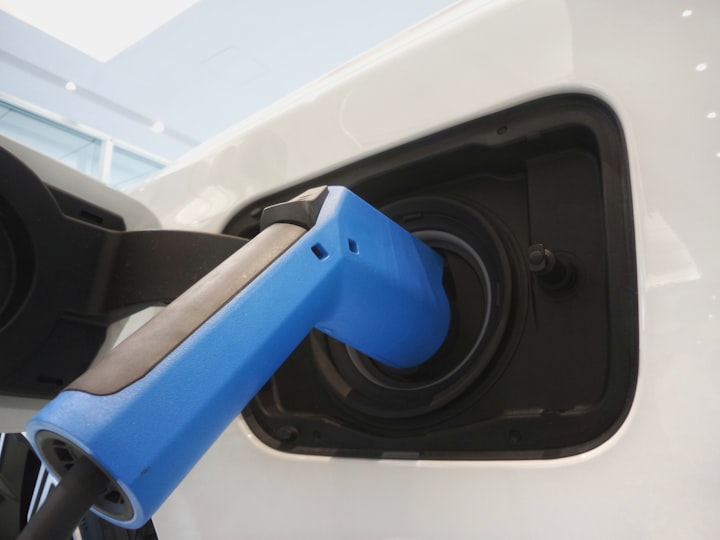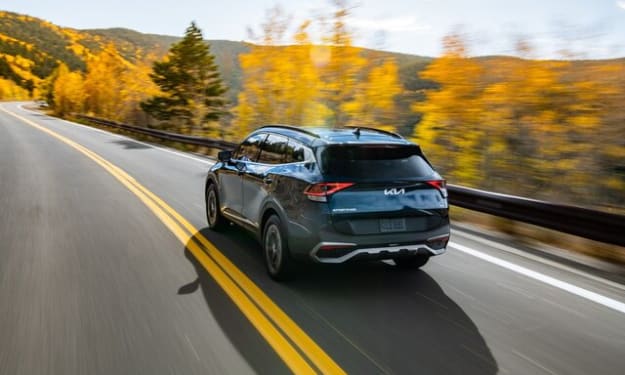The Future for Fuel-Powered Trucks
What will happen to them when EVs Dominate?

Today, the vast majority of vehicles on the road run using fuel, and only a measly percentage are electric. However, electric vehicles (EVs) will soon dominate the streets (and even the off-road trails). Major automakers have begun releasing electrified versions of their popular truck models that started with combustion engines.
So, what will be the future for fuel-powered trucks when dominated by EVs?

How EVs are taking over
Many vehicle manufacturers will prioritize selling EVs globally by 2040. The governments in different countries back this goal and provide incentives for those who want to switch to electric-powered cars.
As the auto companies worldwide gear up for the upcoming shift to EV sales, it will be a massive financial commitment. According to a Reuters analysis, many automakers have already invested billions of dollars in the transition to electrification.
GM released electric Hummers in pickup and SUV form, while Chevrolet will create an electric Silverado. Ford invested $22 billion for battery EVs and released their F-150 Lightning. Fiat Chrysler Automobile (FCA) and Peugeot S.A (PSA) Group merged to create Stellantis, so they have Grand Cherokee 4xe and Jeep Wrangler 4xe plug-in hybrids on their lineup. Toyota is getting ready to do an electric version of their Tundra and Tacoma.
Other startups are working on EVs, such as Tesla’s Cybertruck and Rivian’s R1T. The smaller EV producers need hefty capital investment, the same as other established auto companies. Nearly every well-known automaker around the globe develops their electric vehicles.

Governments drive the shift to EV
One of the goals of climate policy selling is to have newer and cleaner vehicles. The government of the United States views the shift to EVs as a critical solution to climate change. To meet President Biden’s goal of net-zero emissions, the sales of fuel-powered vehicles would end in 2040.
Government policies are giving a boost to electric vehicles, especially in China and Europe. They push for electric-powered cars due to the devastating impacts of climate change and the importance of improved air quality in cities.
There are also several other options to speed up the rate of turnover to electric cars. The policymakers could focus on electrifying ride-sharing programs like Lyft and Uber. Most cars used in the ride-sharing apps tend to drive more miles on average than privately-owned cars.
Despite the auto industry's move from internal combustion technology to electrification, many consumers prefer their gasoline-powered trucks over the electric versions.
Electrifying the truck fleet
Many sectors have modernized and wielded electrification to their benefit. But for the automotive industry, analysts and industry watchers think that governments must implement some ways to nudge the hand of the market to make it faster. Suppose the governments want to speed up the auto industry change. They can impose mandates for the electrification of commercial truck fleets, set some stricter limits on carbon dioxide emissions, and subsidize the EV infrastructure.
However, electrifying the commercial truck fleet may be the most challenging part. The slow fleet turnover is a major hurdle for climate policy.
Battery-electric power is the prospect for heavy-duty road freight. Using electricity to charge the batteries is much cheaper to run than filling up the fuel tank. But many remain skeptical, especially in the logistics industry, if the batteries can power large freight trucks.
A battery-electric truck cannot compete with one running on diesel, especially if it has multi-day trips with a team of two drivers. It is also not recommended for trucks transporting large-scale and weighty hauls with a range of 2,000 km.
Commercial fleets are more substantial than standard pickups and dually trucks. You can even compare them with the size and number of wheels and tires used. They have a more extensive range and weight capacities, so they must use many batteries to power up commercial trucks.
No more brand-new fuel automobiles in 2040
Fuel-powered pickup trucks top the charts as the current best-selling vehicle in the United States. Until now, many consumers would like to buy them. But due to the ongoing production dilemma brought by the global chip shortage, buyers need to prolong their patience and wait.
Vehicles running on gas or diesel currently rule the roads. However, in 2040, things will change. We will start seeing dealers offering brand-new electric-powered cars in their showrooms and none of the beloved fuel-engine car models.
But will modern-day gas-powered vehicles survive in an electric car future? The answer is yes—since they won’t completely disappear in just a snap.

How can modern trucks survive?
The rise of EVs does not automatically mean the end of all gas-powered cars. Governments, especially in the United States, will not entirely ban the use of automobiles with internal combustion engines (ICEs). However, it will be harder to buy them when global EV sales transpire.
Less than two decades from now, those who want to purchase new fuel-powered vehicles will have to search the used car market. The used car market will offer automobiles that remain in the dealers’ lot and factories. Even if tagged as unused and unsold, they will mark the cars “used.” By that time, expect the secondhand car market to be more saturated.
As the shift to EVs expands by 2035, The percentage of electric cars cannot immediately surpass the number of vehicles running on fuel. The older cars and trucks will stick around for a decade or two.
Indeed, banning the production of brand-new cars with ICEs and its sales on the new car segment can hinder its cumulative rate. However, it will take a long time for all the existing fuel-powered vehicles to reach the end of their lifespans.
It could take years or even decades before plug-in hybrid vehicles (PHEV) and battery-electric vehicles (BEV) have a drastic effect on greenhouse gas emissions. Even if the new EV sales reach 60 percent in 2050, most cars on the road would still run with diesel or gas.
Conventional gas-running automobiles are becoming more reliable. Automakers created modern pickup trucks with internal combustion engines, outstanding features, durable truck parts, and safety-assist tech. The engineering quality of auto manufacturers has gotten significantly better over time.
IHS Markit, a data and analysis company, mentioned how many years light-duty vehicles can last. For those operating in the United States, these vehicles can last an average of 12 years. That’s why you can see cars older than 2002-year models on the road. Contented truck owners will continue to use their vehicles in the coming years, even if various automakers release more electric versions of pickup trucks.
Not the end for fuel
Going electric is an eco-friendly goal that will help fight climate change. Although EVs will greatly impact the auto industry by taking over the market, most American cars still run on gasoline.
NPR has tackled the forthcoming change to electric-powered automobiles. They mentioned that even if you start today selling a hundred percent of EVs, it will take about 20 to 25 years to replace the entire vehicle fleet running on fuel.
What car manufacturers are doing now is to improve the remaining fuel-powered vehicles they are about to produce. They are using more advanced technology than what it was a few decades ago. Trucks nowadays have powerful engines with turbo-boosting features and direct injection. Today’s vehicles have internal combustion engines that are more efficient and run cleaner.
About the Creator
Jen Demkin
Hi, I'm Jen from 4WheelOnline. My fascination with vehicles started in my childhood. I like cars more than dolls. I enjoy writing about automotive industry news, vehicle maintenance tips, and more.






Comments
There are no comments for this story
Be the first to respond and start the conversation.